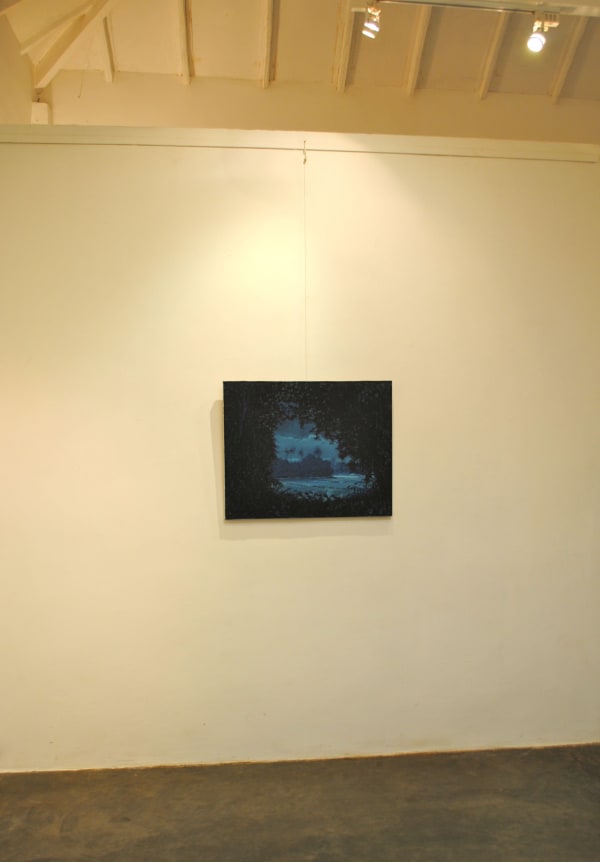Pilgrimage Overland: Anup Vega
‘Pilgrimage overland; crossing the conventional boundaries between art and life.’
Anup Vega
Born in 1967 in Kurunegala, Anup Vega, like most artists, began drawing at an early age. Unlike most, art was simply habitual enjoyment for him; his inspiration was untainted by the theories and art movements of any syllabus as he did not pursue a further education in fine art. Vega lived in Kurunegala until 1979, finishing his O Levels to please his mother, a schoolteacher at the time, and then left school to wander about for a few years, playing the guitar as a hobby. In 1990, Vega entered the hotel industry and he found himself returning to art using food and beverage as a medium. He recalls a time, during a 10 month stint in the United Arab Emirates, when he was inside looking out into the desert while carving out an ice sculpture.
Vega returned to Sri Lanka and began drawing and painting again. It was not long before Mr. Ajitha de Costa, the owner of the Heritage Gallery, discovered him. Heritage Gallery, where Vega had his first solo in 1997 was located in the same building that now is the Saskia Fernando Gallery. This was the beginning of Vega’s career as arguably, one of Sri Lanka’s best draftsmen and foremost self-taught artists. This is one major characteristic of Vega’s that brings a very strong spiritual element to his work. When you meet him he ticks all the stereotypes of an artist in the least stereotypical way. In his Volkswagen van he travels around the island practicing his yoga, painting and continuously sketching in his glorious little books. Here is in artist with a natural-born talent.
Indeed art is Vega’s livelihood but now with his first exhibition in 3 years it is evident that the true soul and passion he attributes to his choice to become an artist has returned at new heights. While Vega resides with his family in Pannala he travels through out the island. This movement has become his process of painting; it levels him and brings him back to where he was first inspired. It is in fact, Vega states, the teachings of the universe that brought him back to landscapes. The physical movement in itself allows his work to flow; the Pali term used for this process is pronounced as ‘Charath’, which means one has to move to find inspiration. For Vega the landscapes are figurative as they too have a life form, the cliché of ‘one with the earth’ is most honestly facilitated in his pilgrimage overland.




